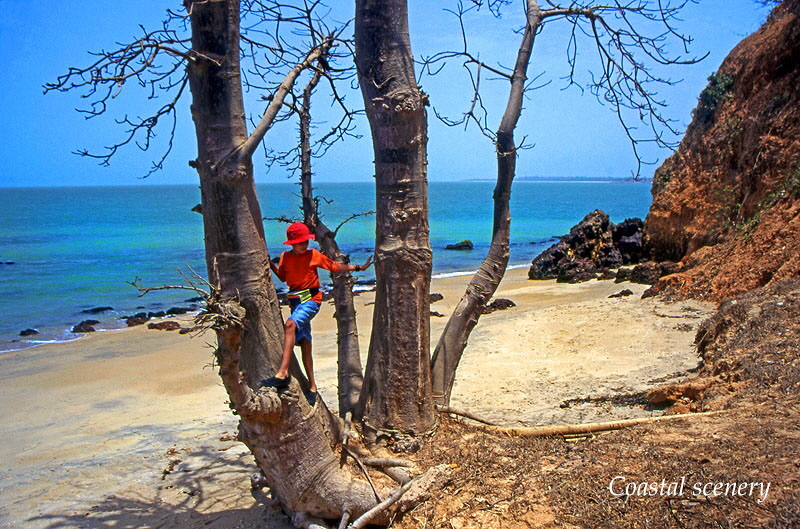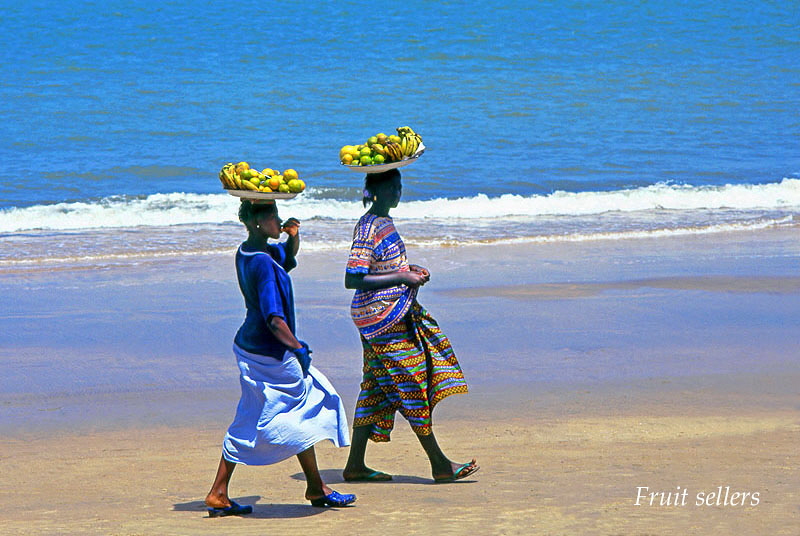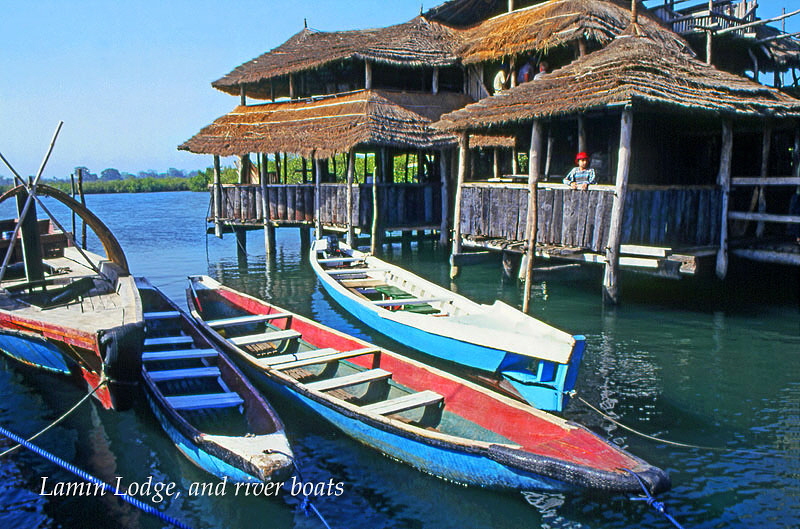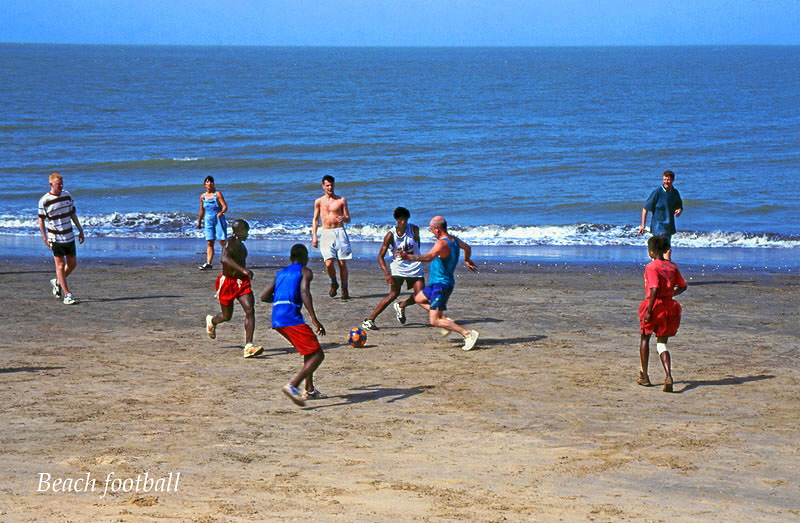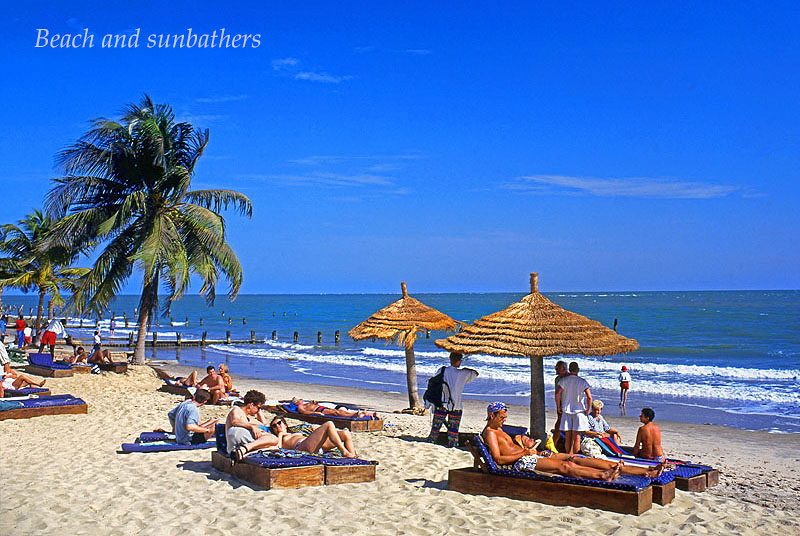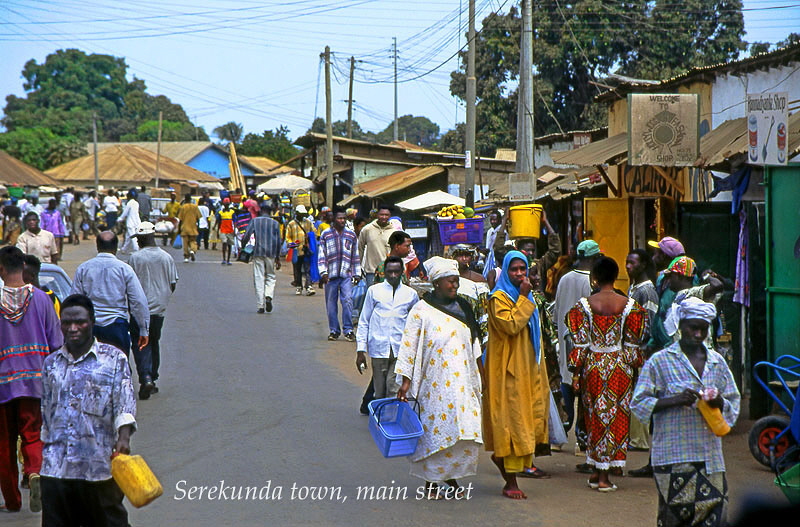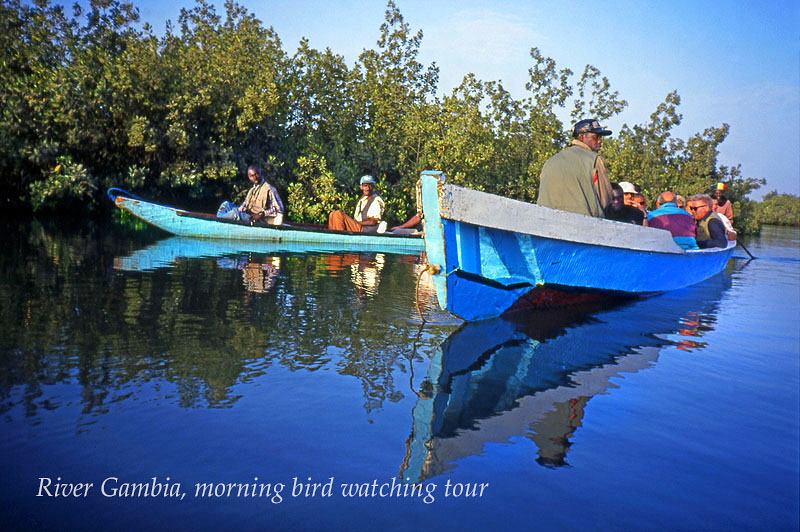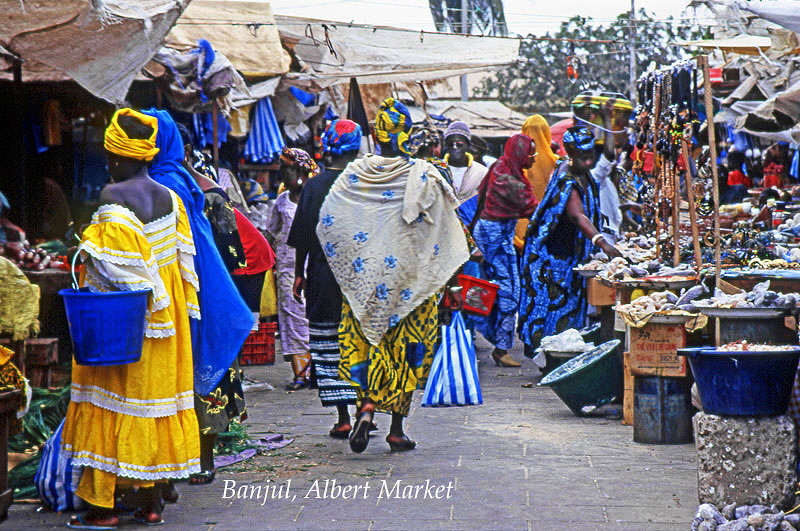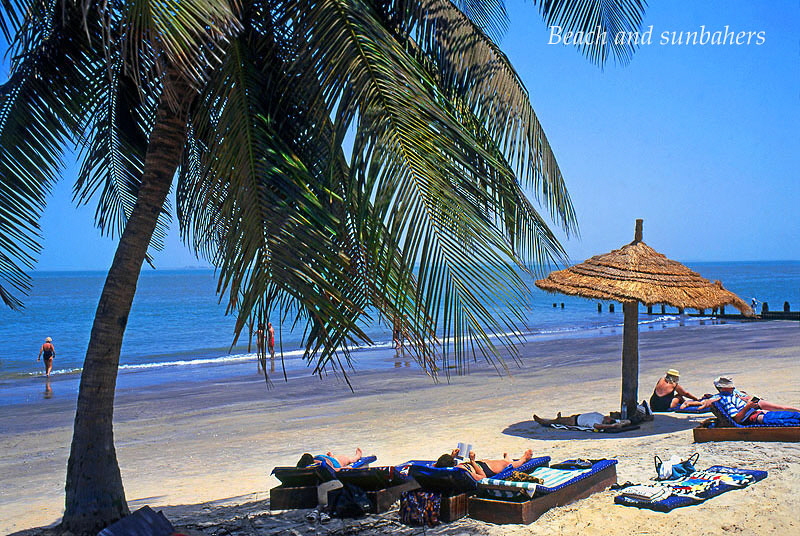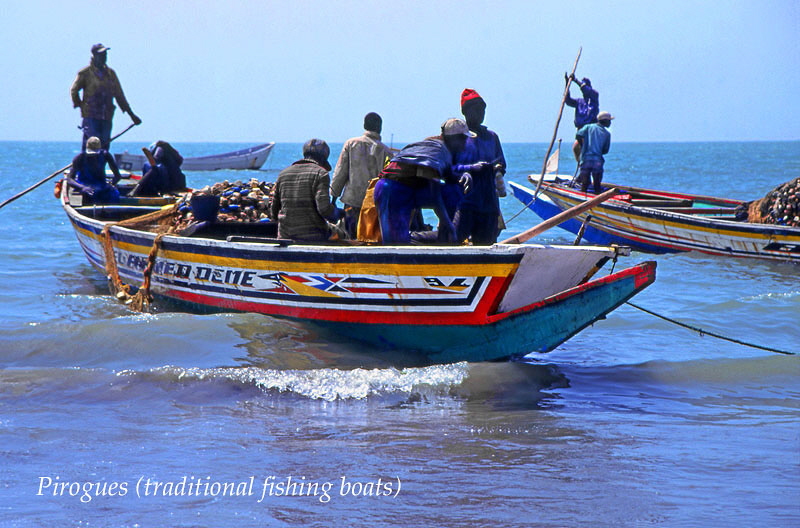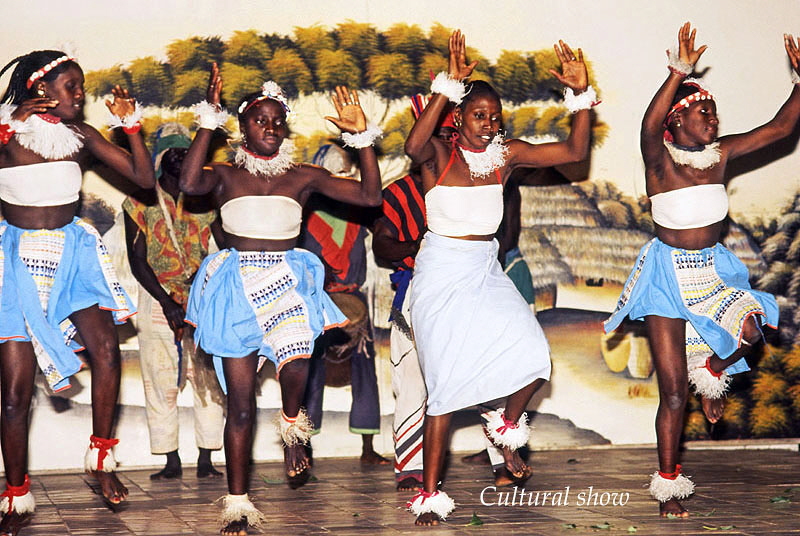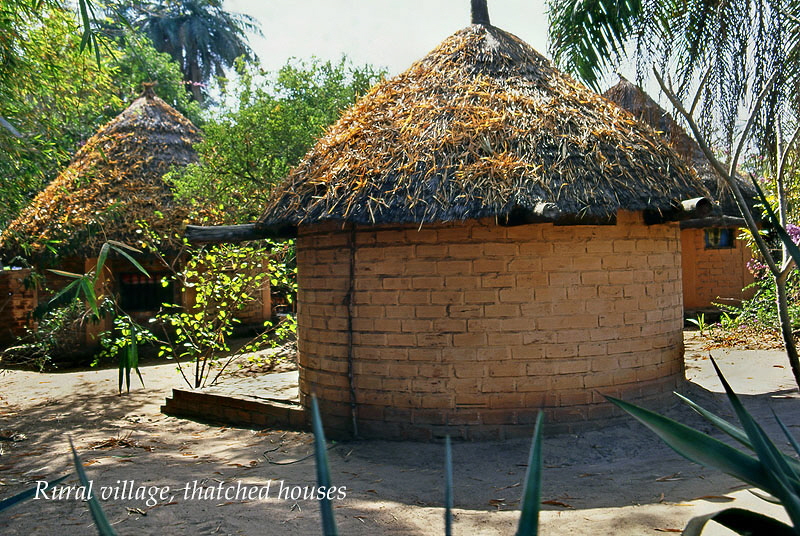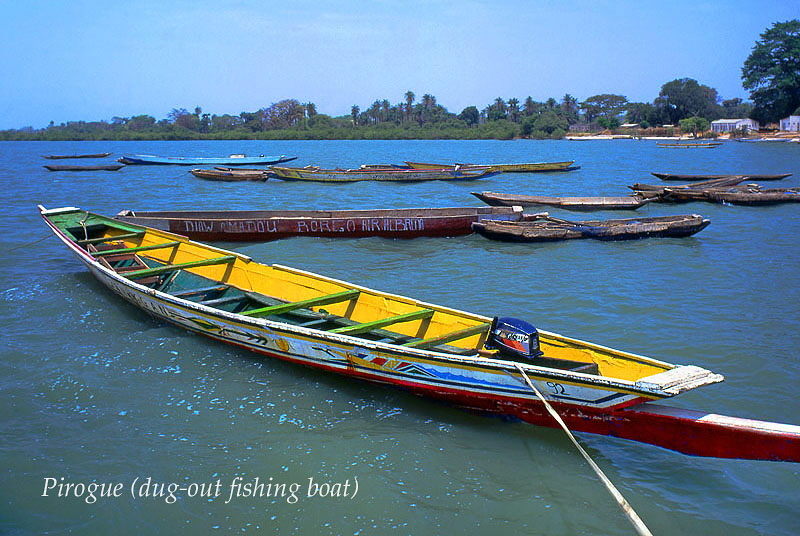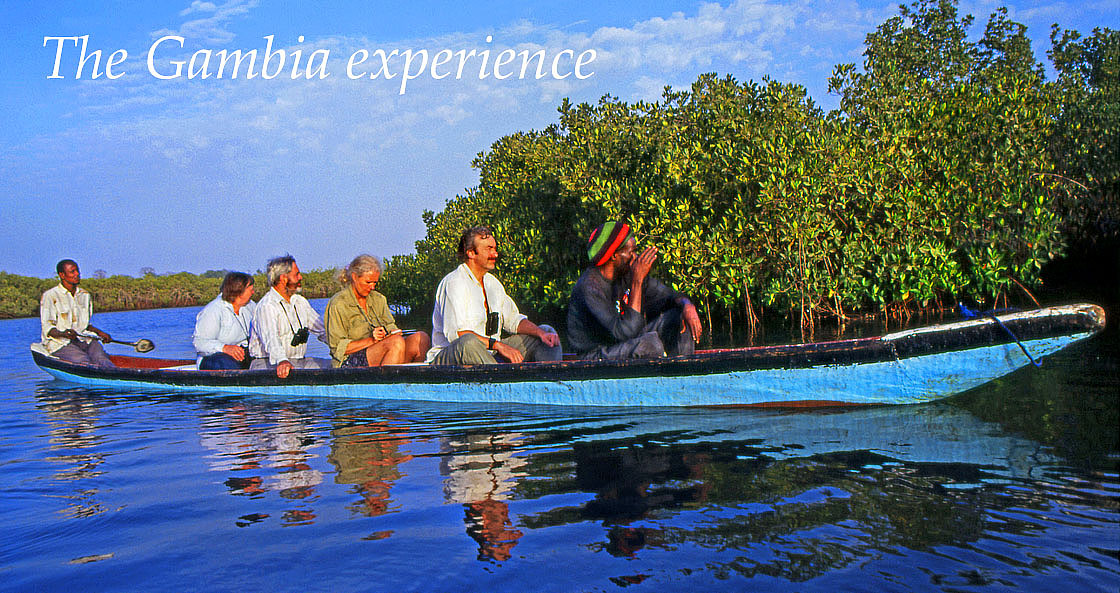
Discover the smallest country in mainland Africa
Of the 54 countries in Africa, most are accessible to the tourist. Selecting one for your holiday can be challenging, especially if you want to visit some of the lesser popular destinations or safari-dominating countries. So what makes the tiny island of The Gambia worth a visit? Size. If you want to experience true African hospitality, combined with an enviable coastline and an insight into African culture, The Gambia is ideal. And being such a small country, you will not have to travel far distances to explore.
Kotu Beach
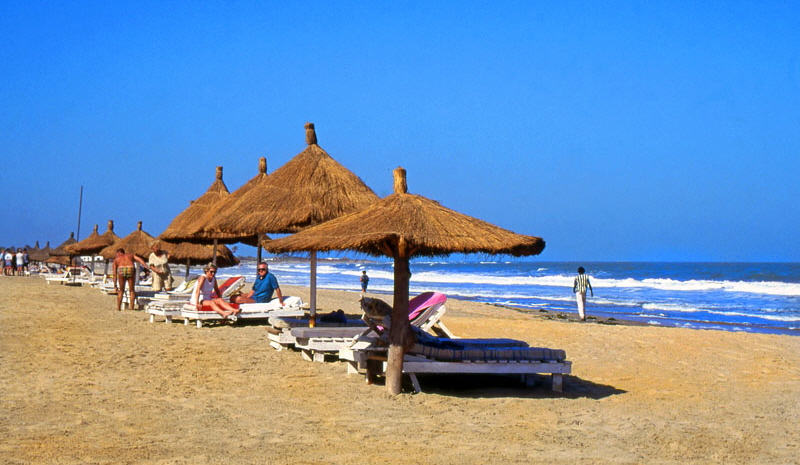
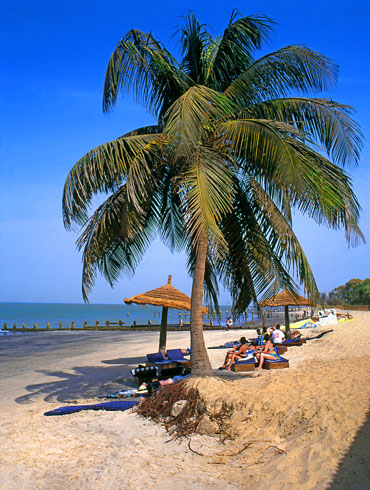
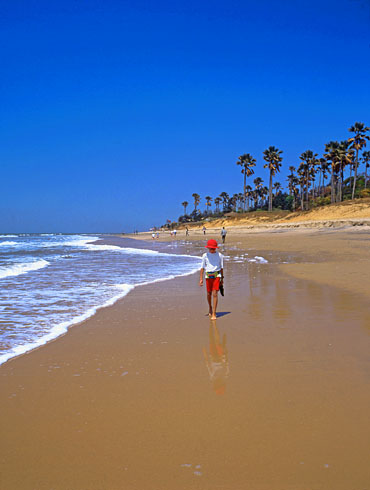
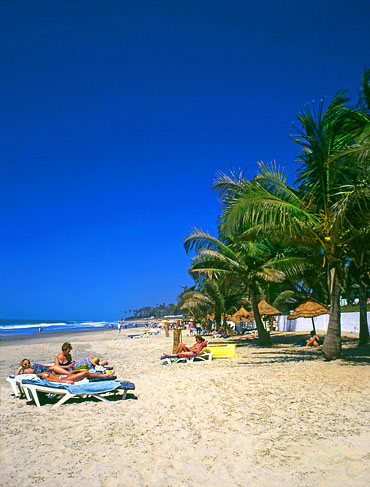
Most visitors to The Gambia head straight to one of several beach resorts - Kotu Beach being one of the most popular. The idyllic golden sandy shore stretches for several miles along the Atlantic coast and is never crowded. With coconut trees lining some of the seafronts you can find shady spots to avoid the midday tropical sun. Alternatively, most resort areas provide thatched sunshades as a substitute. Many hotels are located here and are a good base to begin your sun-drenched holiday with a bit of sightseeing to enhance the experience.
Being quite touristy, at Kotu Beach the inevitable beach hawkers tend to approach the tourist with their goods, and a firm but polite no thank you is all that’s needed if you wish to deter them.

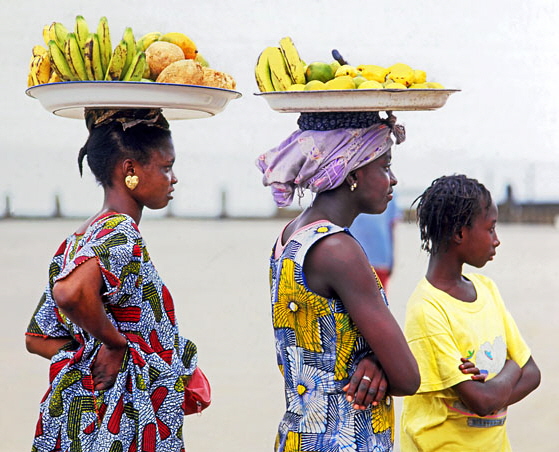
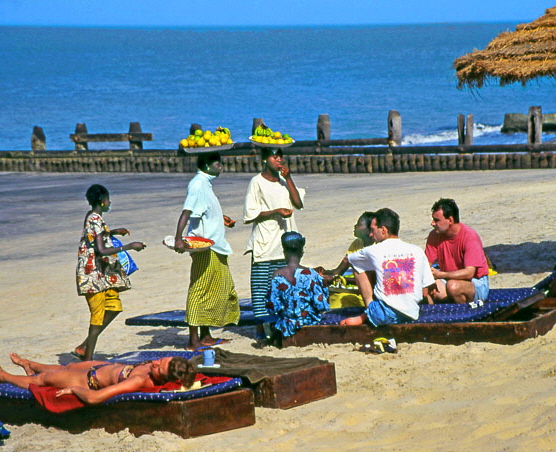
Fruit sellers balancing their baskets on their heads is a common and pretty sight. Bearing exotic Mangoes, Pineapples, and ripe Jack Fruit are among the more usual items that are tempting and should try. The Cashew Apple (fruity part of the cashew nut) was new to me and tasted sweet with a hint of acidic flavour.
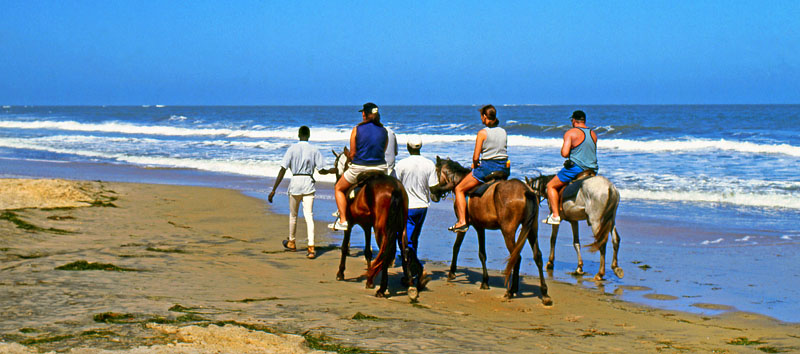
Seaside activities are limited, with pockets along most beaches offering windsurfing, paragliding and jet-skiing. If you don’t fancy walking the length and breadth of the beaches, a more ‘lazy’ way is to take a horseback ride with a guide at a gentle pace along the beach.
Leave the coast for a while and head into the countryside
There are plenty of sightseeing options. From sites depicting a turbulent colonial past to beautiful natural landscapes and rural lifestyle, the scene away from the beach is compulsive viewing. While car hire is readily available, the road conditions off the main thoroughfares are often variable and can be difficult to manoeuvre especially in the rainy season. Resort hotels can provide a car with a driver at a daily rate which I chose a couple of times. I also joined a guided full and half-day excursion.
James Fort Island
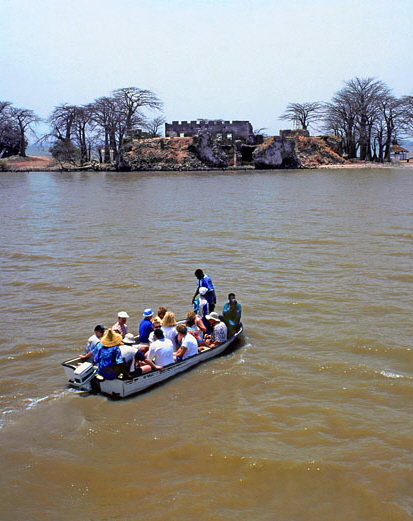
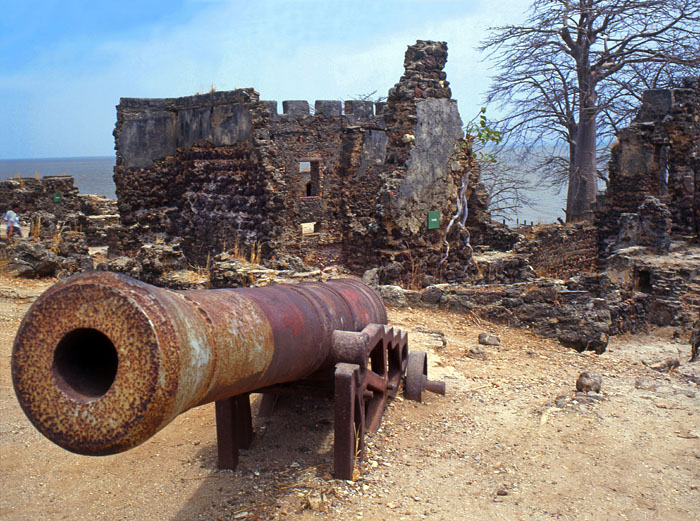
One of the most popular sights, though not a 'beautiful' experience is a visit to James Fort Island. First colonised by the Portuguese, then by the British, the tiny island embodies ruins, prisons, canons and reminders of the brutal past of the West African slave trade. It was renamed ‘Kunta Kinteh Island’ following Alex Haley’s book which became a famous 1977 TV series ‘Roots’ and depicted the character of Kunta Kinteh being brought on a slave ship to Maryland in the US. The island is reached by a short boat ride across the River Gambia, and once there the atmosphere is truly palpable. Recognised as a UNESCO World Heritage Site, this is a trip that should not be missed.
Juffureh village, typical thatched houses
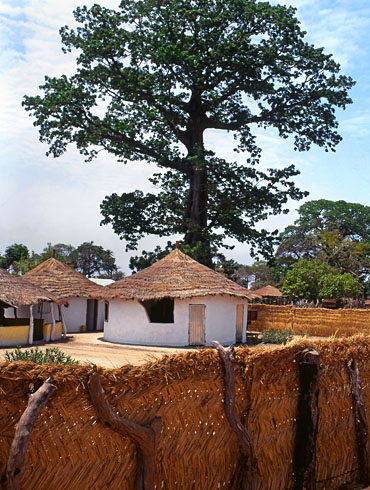
Grinding nuts with large wooden mortar and pestle
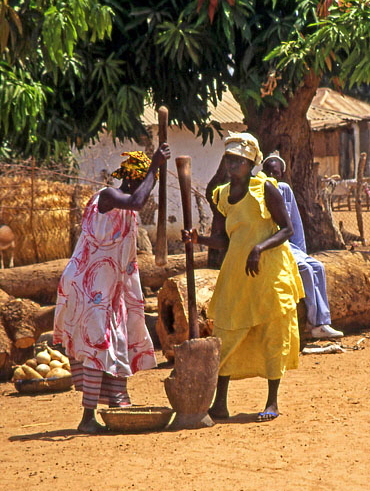
Albreda
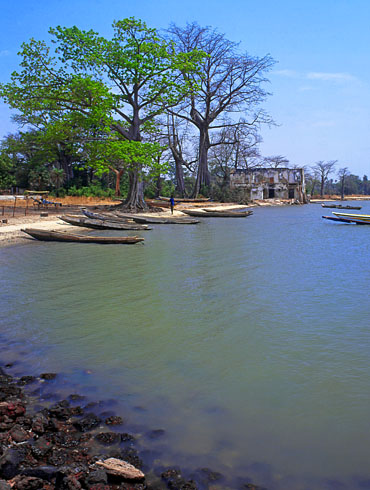
Keeping with the ‘Roots’ theme, visiting the small villages of Juffureh and Albreda are usually included if you take the tour to James Fort Island. Unfortunately, these once traditional villages and its historic past have turned into a tourist attraction. The persistent begging and souvenir selling had me at odds with the nature of my visit. Still, there were intermittent glimpses of streets with typical thatched houses, villagers pounding nuts with a wooden mortar and pestle, and others drawing water from wells. A visit to the small museum however, brought me back to the horror of its documentation of how the Gambian people were kidnapped and sold into slavery.
Juffureh villagers
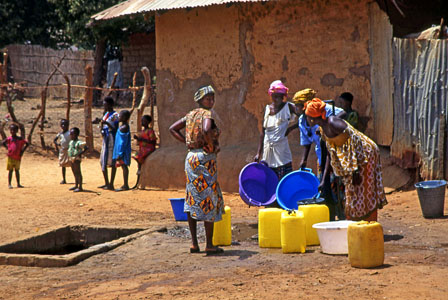
Exploring nature and the countryside
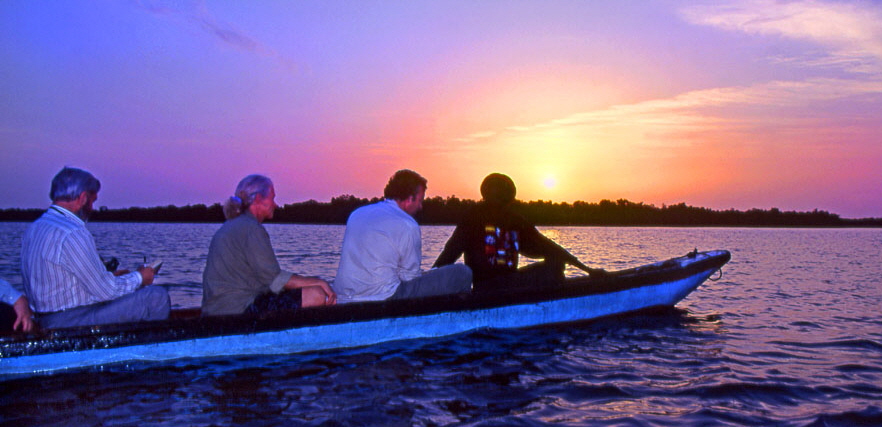
Strictly for bird watchers and even ornithologists, there are several nature tours to venture into. Although not being a birder myself, I was still intrigued and joined a group tour along the mangrove swamps of the River Gambia. There were several pirogues (traditional fishing boats) ready to depart from Lamin village at the crack of dawn. The early morning breeze was cool and made it a pleasant outing. Most of my fellow participants in the group were well equipped with their cameras and some with gigantic telephoto lenses and field glasses, and I with nothing but my usual little camera. However, the trip was immensely enjoyable, just quietly cruising the calm waters. While listening to bird calls, the guide kept whispering and pointing at the bird life, some which I spotted hiding in the river foliage.
Sandpiper
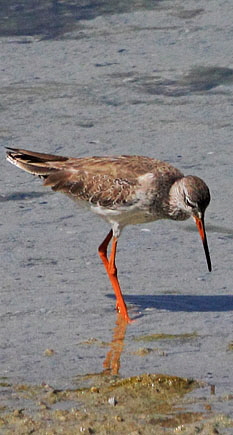
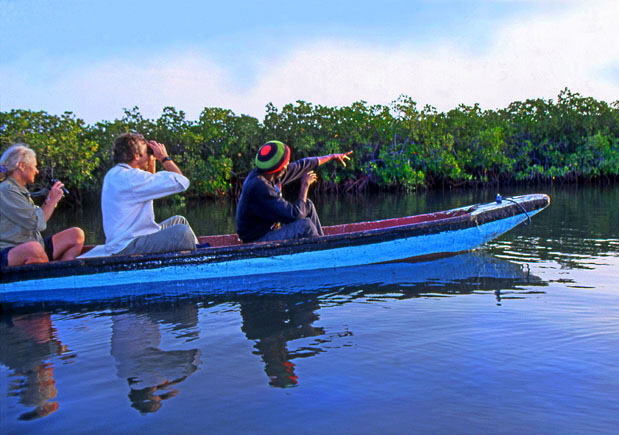
Great Egret
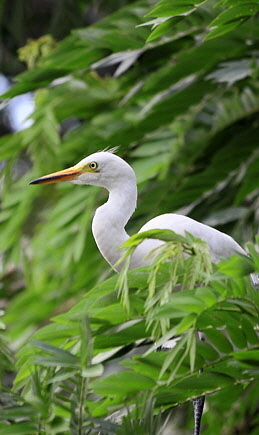
And as the sun rose, the golden sky began to turn blue and the temperature rose with it. It was time to head back and disembark at Lamin Lodge, which is a rustic waterfront restaurant. Under the shade, it was lovely to have an ice-cold drink of fresh coconut water. Do beware of the cheeky green velvet monkeys that scurry about trying to steal your food or drink. The tour continued into the village for a short walk in the blazing hot sun, where there was nothing really interesting to see.
Take a gentle hike in the rural areas
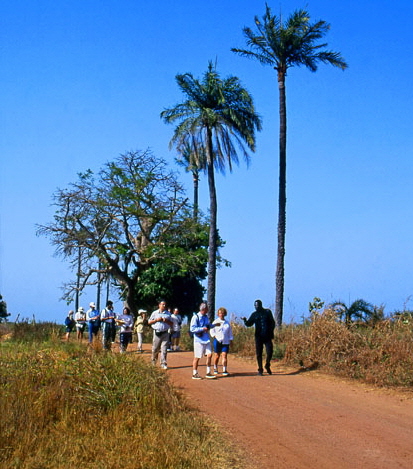
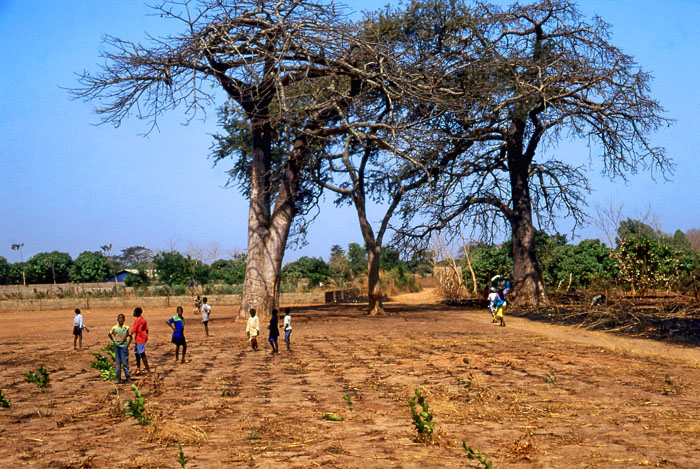
There are several other bird watching land tours, which I did not try, but did join a nature hike in the countryside. Passing villages and farmed land, huge Baobab trees and termite mounds was an interesting half-day ramble with a knowledgeable guide. The guide was informative, explaining the local way of life of rural communities and farming methods. We passed tall Palm Trees where a couple of climbers were high up tapping the sap for alcohol making.
Huge Baobab tree
Termite mound
Palm Tree tapping
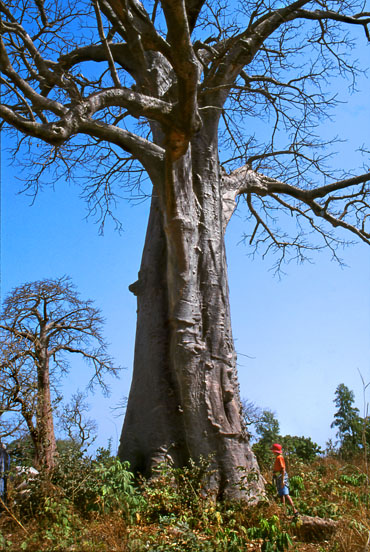
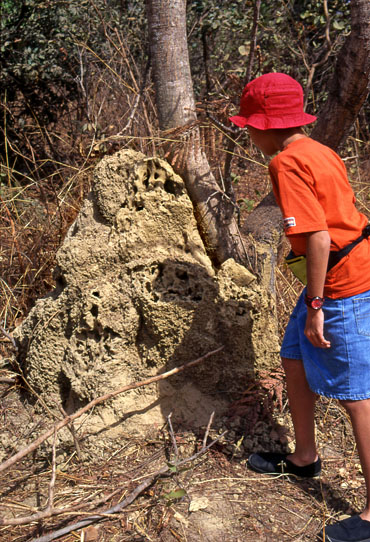
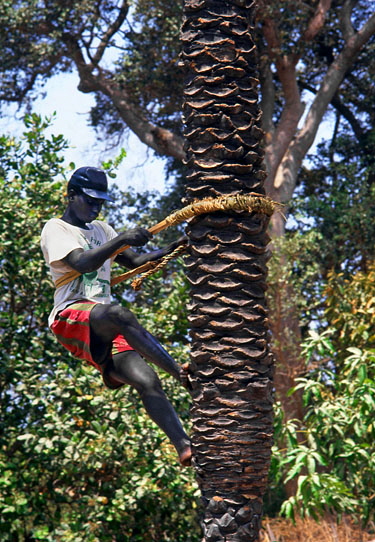
Then it was off to the coast to a fishing village and watch the pirogues coming in with their catch. The fish was unloaded into large plastic bowls for selling, as well as transporting to the markets. It was a busy affair, with buyers and sellers trading and socialising and welcomed us visitors to mingle with them.
Pirogue arriving with its catch
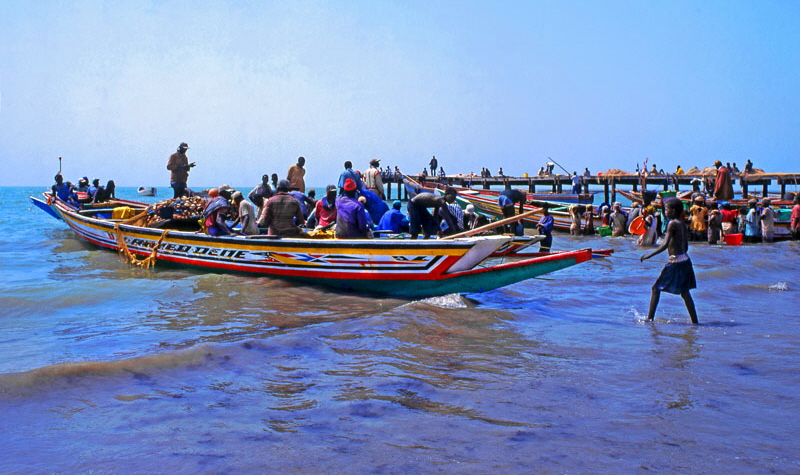
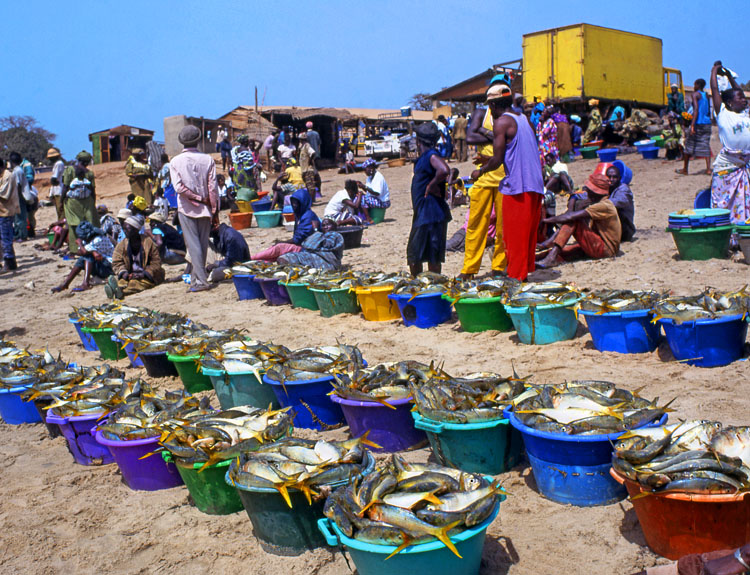
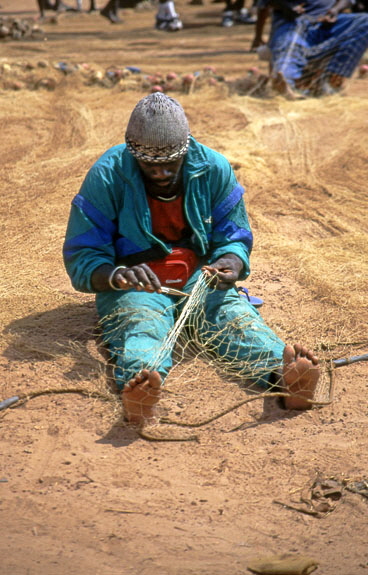
Another nature trail through a small forest leads to the Kachikally Crocodile Pool and Park. There are around 70 crocks in the area and are free to roam about. Those dozing on the banks may look docile as I watched some tourists go near enough to touch them and take selfies. However, I would definitely avoid such interference. The waters of the pool have ‘fertility legends’ attached that go back five centuries. It is believed that the crocodile represents the power of fertility, and women with difficulties conceiving come to wash and pray in the pool.
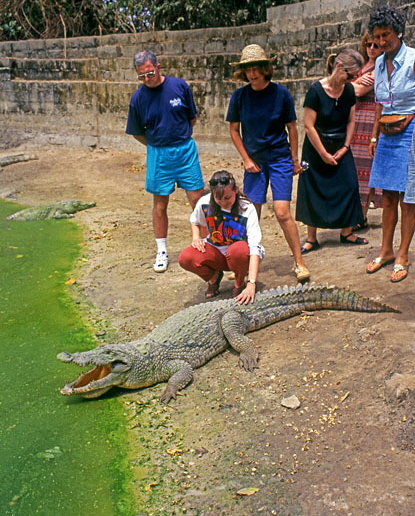
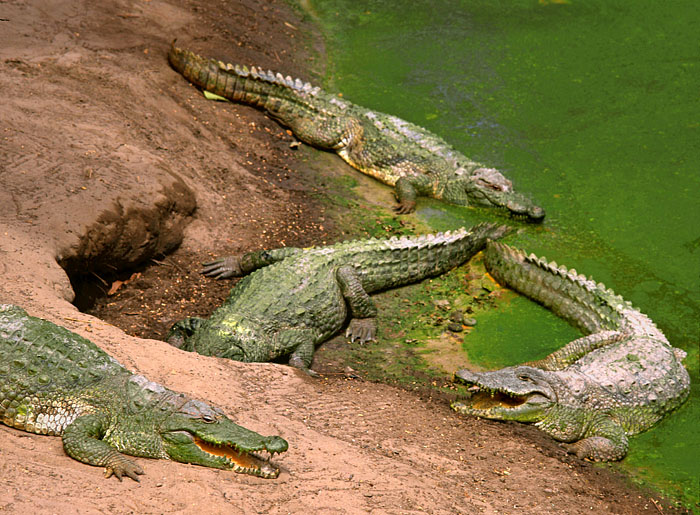
Calling at the Albert Market in the capital Banjul is an insight to observe locals trading and shopping. Small shops crammed with stalls sell most essentials like fruit and vegetables, as well as clothing and appliances.
The crafts shops are particularly interesting, where you will find the traditional art of ‘Tie & Dye’ batik material for sale. Instead of chemical colours, the fabric hues are made using natural dyes from nuts, leaves and trees. The guide escorting a small group of us lead us to see a demonstration and explanation of the intricate process of preparing the materials. And for visitors, from hand made batik dolls to large beautiful wall hangings, they are excellent souvenirs and gifts to take back.
If you pass through Serekunda town, the main road is also crowded on either side with busy market stalls and traffic. But it is worth a short stop just to observe the local lifestyle and people going about their daily business.

Tie & Dye art
Tie & Dye souvenir dolls
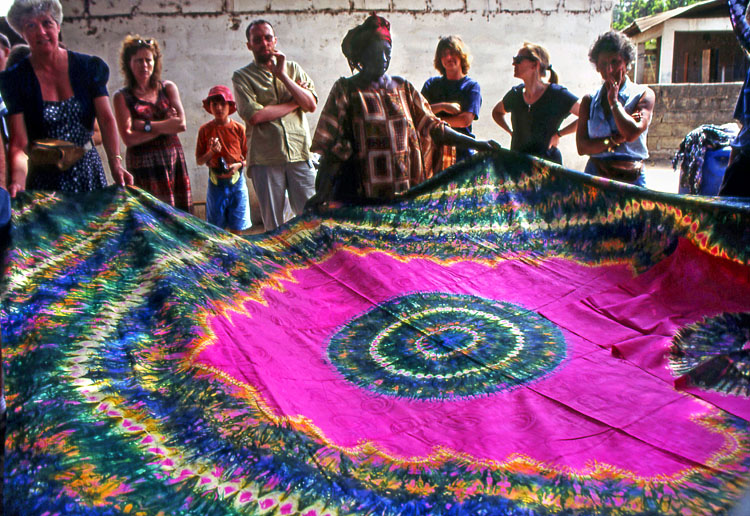
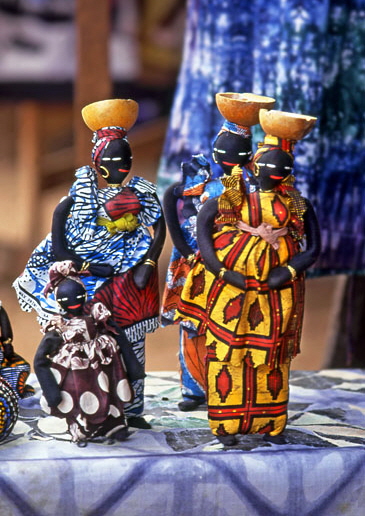
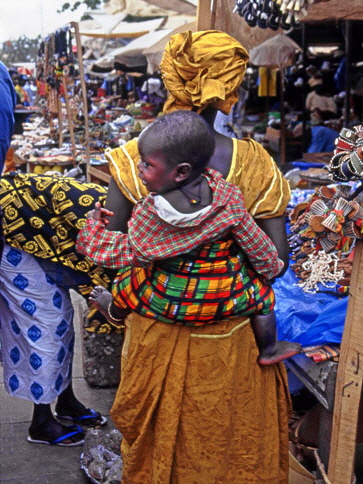
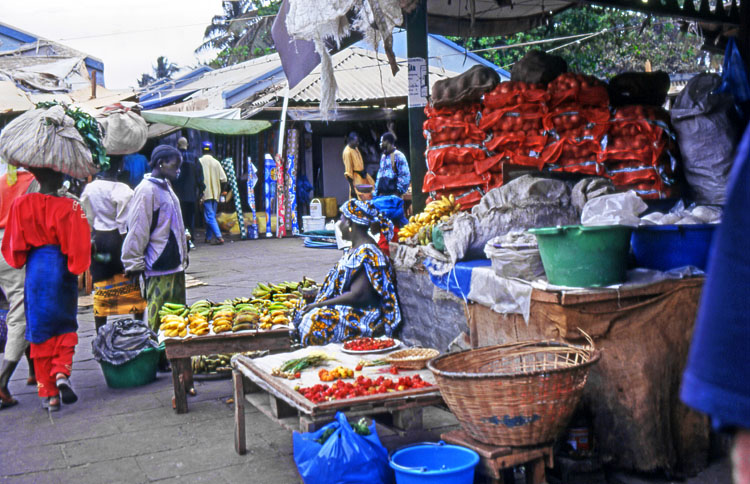
Albert Market
Back on the coast and resorts, as the evening approaches, holidaymakers are out on the beaches with their phones to watch and photograph the sun go down. As for nightlife, it consists mainly of bars or restaurants with some live music. There were a few nightclubs which did not look appealing to me. For a more entertaining experience, many hotels host cultural shows featuring several tribal dance routines. Performers decked up in typical attire act them out with exuberant body, arm and foot stamping movements, with musicians playing the drums and the kora (traditional musical instrument). A perfect way to end the day.
Kora, musical instrument
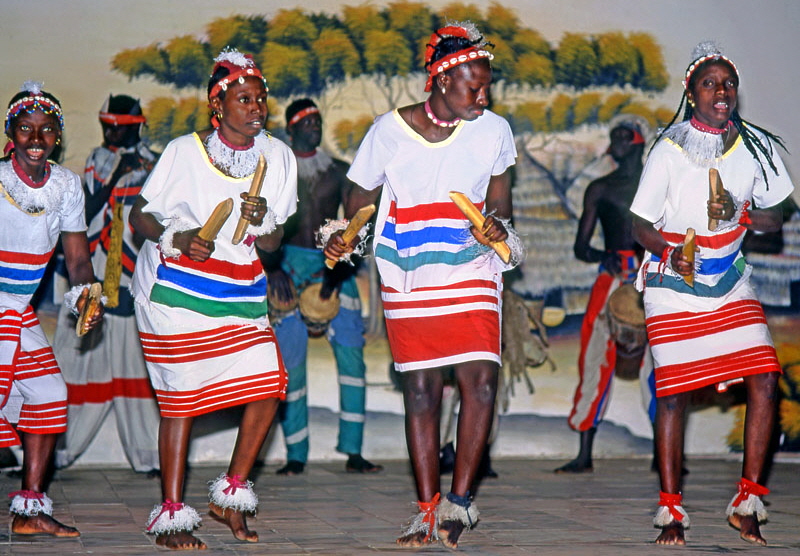
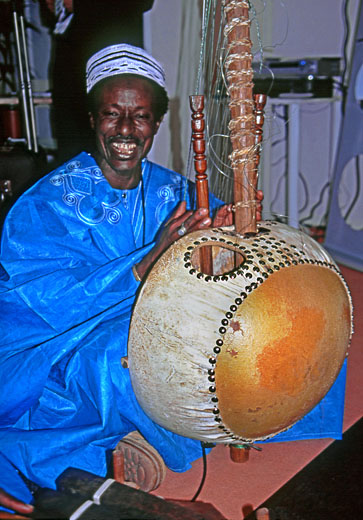
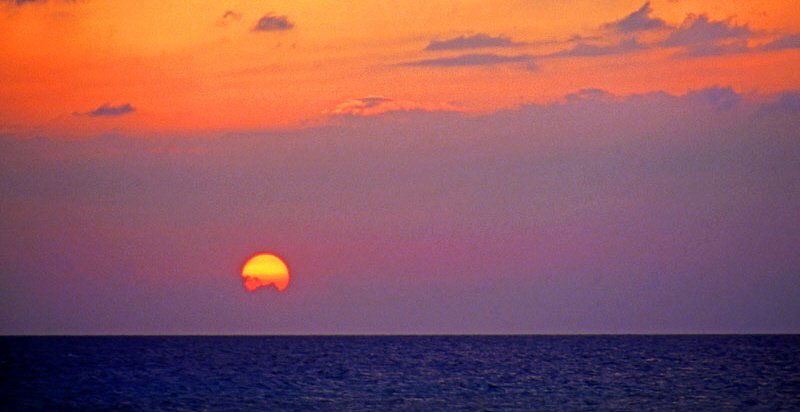
Note: The Gambia is one of the poorest developing countries in the world. Yet it’s trying hard to deploy an ethical and responsible tourism agenda. Therefore visitors are kindly requested to be respectful and appreciate cultural differences. Tip generously when you can. When shopping and bargaining, expect to pay more than a local would.
15 images here ©JAYTRAVELPHOTOS
© COPYRIGHT notice. The images on this site are for viewing only.
To purchase any, for personal or commercial use, please contact us at jaytravelphotos@aol.com
____________________________________________________________________________________________________________________________________________
